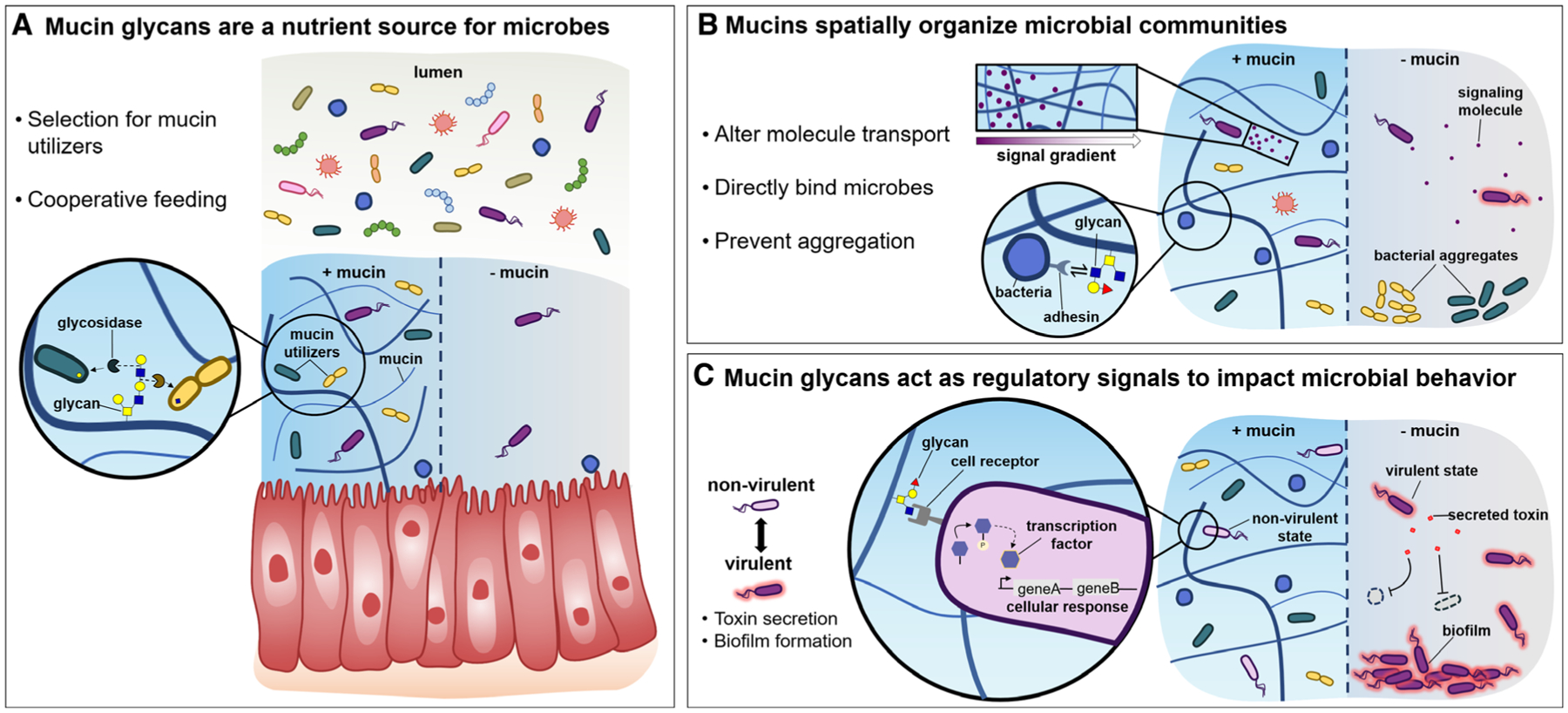Fig. 3.

Proposed mechanisms of influence of mucins on microbial communities. A. Mucin glycans are a source of diverse and complex nutrients, which can metabolically shape the microbiota. Glycans may select for beneficial microbes which produce specific glycosidases, as well as facilitate cooperation across species which produce complementary degradative enzymes. B. Mucin networks may spatially organize bacterial communities in several ways, including by directly binding microbes, by altering group behaviors such as aggregation, or by impacting the transport of nutrients, host immune factors, and/or signaling molecules which may shape the assembly of microbial communities. C. Mucin glycans act through regulatory signaling pathways to attenuate virulent behavior. In the presence of mucins, potentially pathogenic microbes may sense and respond to mucin glycans, which enables their transition a host-compatible state within a healthy community. Without mucin regulation, aggressive microbes may overtake the community, forming a dysbiotic microbiota.
